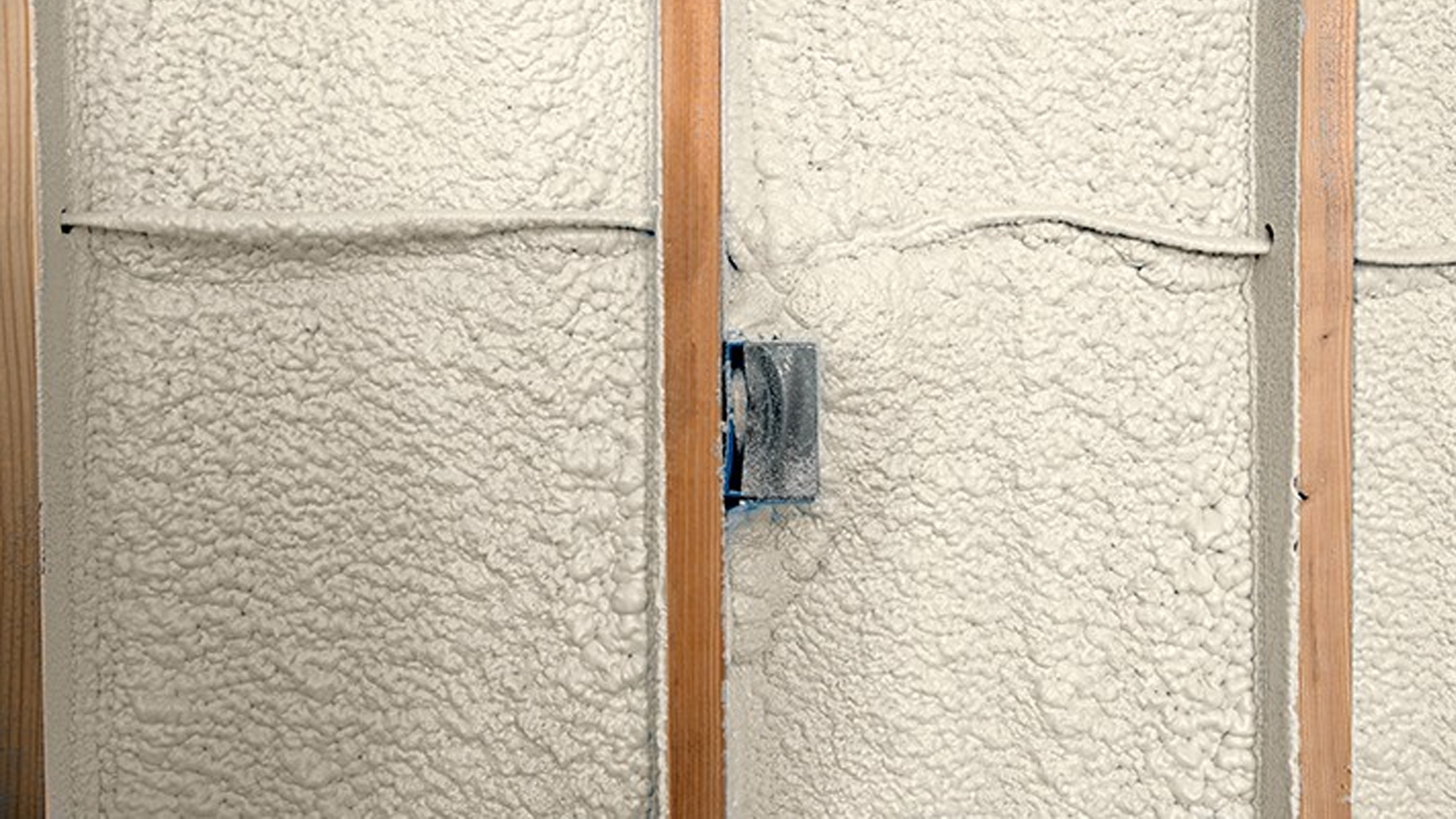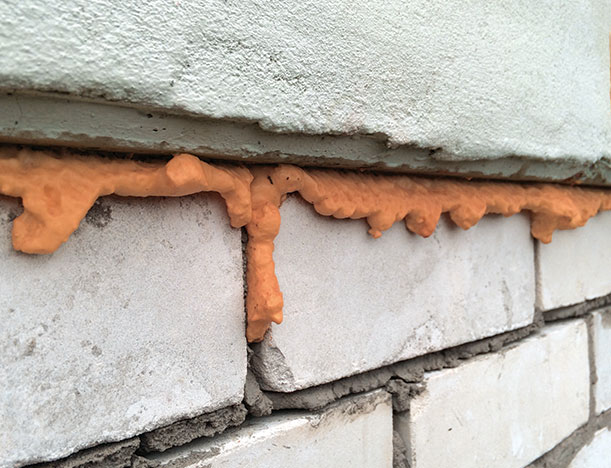
Types of Spray Foam
Closed cell spray foam is another form of insulation method we use. It is a medium density foam which uses a hydro-fluorocarbon as a blowing agent. It is ozone safe and contains no volatile organic compounds (VOC). The closed cell is rigid and is 2 lbs. foam per cubic foot. In this process the blowing agent is trapped inside the closed cells which helps increase the R-value of the foam. You can compare it to how Argon is used in windows to increase efficiency. This type of spray foam works well in new construction, remodels, agricultural buildings, industrial settings and outdoors with a coating.
When the closed cell foam is sprayed, the two part liquid expands about 30 to 40 times itself in a matter of seconds. The general R-value for most closed cell foams are usually 6 to 7 per inch and can be used as a vapour retarder after 2 inches. The closed cell foam works great in both indoors and outdoors and is also an air seal.
Just 2 inches of closed cell spray foam stops 94.4% of heat loss. This means that if you had your furnace set at 20°C and it was -2°C outside, if you have 2 inches of foam it would stop over 94% of the heat loss in your walls. The closed cells air sealing capabilities and the thermal performance is quite impressive. You can also tell from the chart that you do not gain a lot of performance by a higher thickness, so depending on your application applying closed cell spray foam thicker may not be cost effective.

Why Spray Foam?
Just a few benefits of using spray foam in your home or business include:
- Saves energy cost – 50% energy savings
- Stops air and moisture infiltration
- Adds strength to building structure
- Keeps dust and pollen out
- Makes your space more comfortable
- Reduces capacity requirements, maintenance and wear of HVAC equipment
- Increases the resale value of your home or investment


Open Cell Spray Foam
Open cell spray foam insulation is a semi-rigid ½ pound per cubic foot and is low density. This water blown foam is designed for indoor use only. Since the cells are open, it relies on trapping the air inside of the foam, which then insulates the air seal. In open cell spray foam the blowing agent is water, which helps the reaction process respond in the foam. There are NO TOXIC GASES used or released in this process. This type of spray foam works well in new construction, remodels, agricultural buildings and commercial settings.
When you spray the open cell foam into place it expands about 120 times itself and is a two part liquid and it cures into place within seconds. This method has the best cost per R-value of foam insulation. The R-value for most open cell foams are around 3.5 to 4.5 per inch. There are no ozone depleting chemicals such as; CFC, HCFC, fibers, VOC’s formaldehyde, or asbestos. The open cell spray foam is really good for an air seal and also for sound control. We prefer to use the open cell spray foam on above grade applications. It is Hydrophobic, so it repels water well and it doesn’t wick up water. When applied to the underside of a leaking roof deck the water will drain down through it, so it will expose the leaking area under the deck.
Both open cell and closed cell spray foam are excellent choices for insulation, but there are a few advantages to choosing open cell spray foam.
These advantages include:
- Lower cost. Open cell spray foam is generally much less expensive than closed cell spray foam.
- Better coverage. Because it expands more than closed cell, open cell spray foam is better able to completely fill a large area.
- Safer blowing agent. Instead of using a chemical as a blowing agent, open cell spray foam uses water.
- Versatility. Because it is less expensive and does not release any toxic gases in the spraying process, open cell spray foam can be used as insulation in a wide variety of situations.


